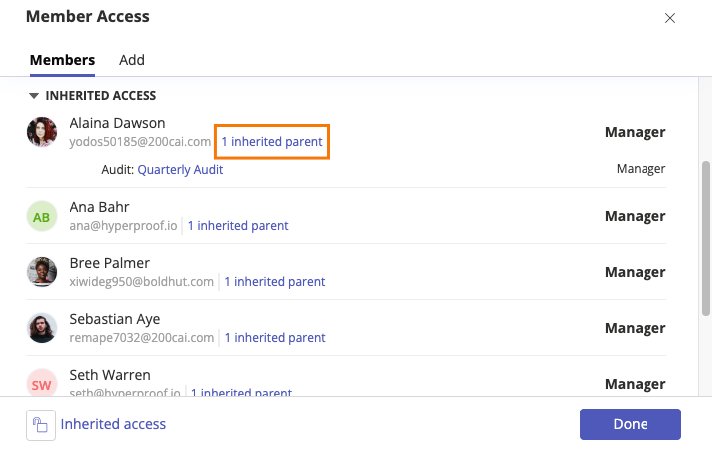Inherited access versus direct access
All Hyperproof work items have a facepile that allows for both inherited access and direct access to an object.

Overview
Facepile is Hyperproof's term for the area where users can view who has access to a particular object, such as a control. Depending on their permissions, users can add, remove, or change user roles. Work items can also be made private via the facepile.
Inherited access means that a user becomes a member of a work item by way of a parent object.
Direct access means that a user has been explicitly added to a work item, for example, a user is specifically added to a request, but not the audit.
Inherited access
Users inherit access to work items via a parent object. An example scenario might look like:
User X is a manager of control ID 1234.
An issue is created by another user and linked to control ID 1234.
Because User X is a member of the parent object—in this case the control—they gain contributor access to the issue.
To see how a user obtained inherited access, click the link next to the user’s email address.

Direct access
A user who has been specifically added to a work item is considered to have direct access to the object. When added, they receive the role of contributor. A user with sufficient permissions can change the new user's role to manager via the facepile.
Facepile
Watch this short video to learn more about the facepile.